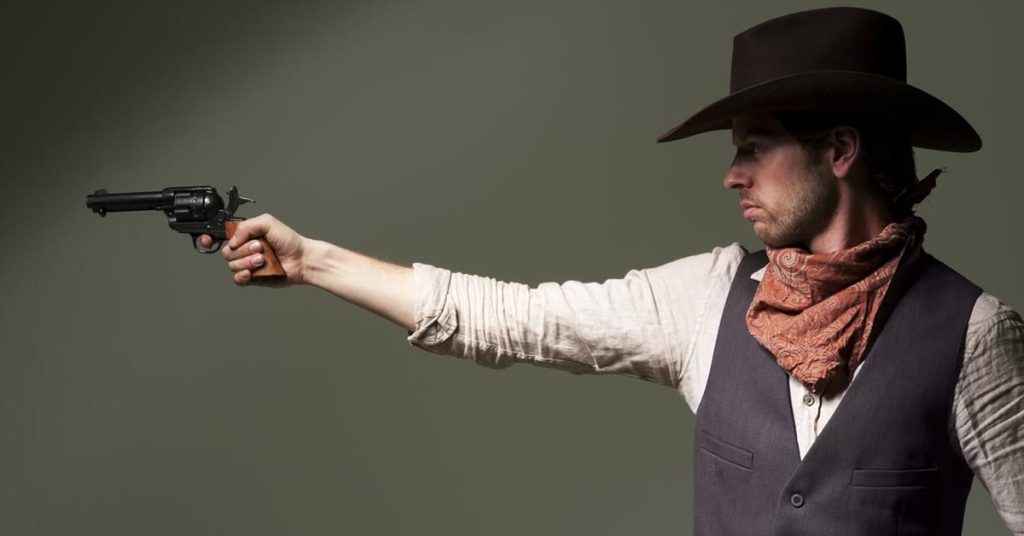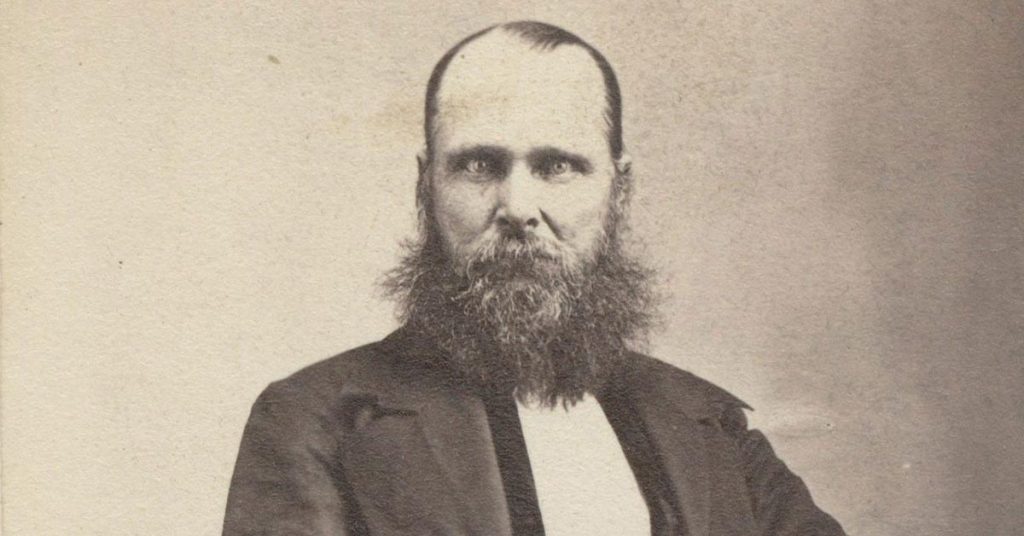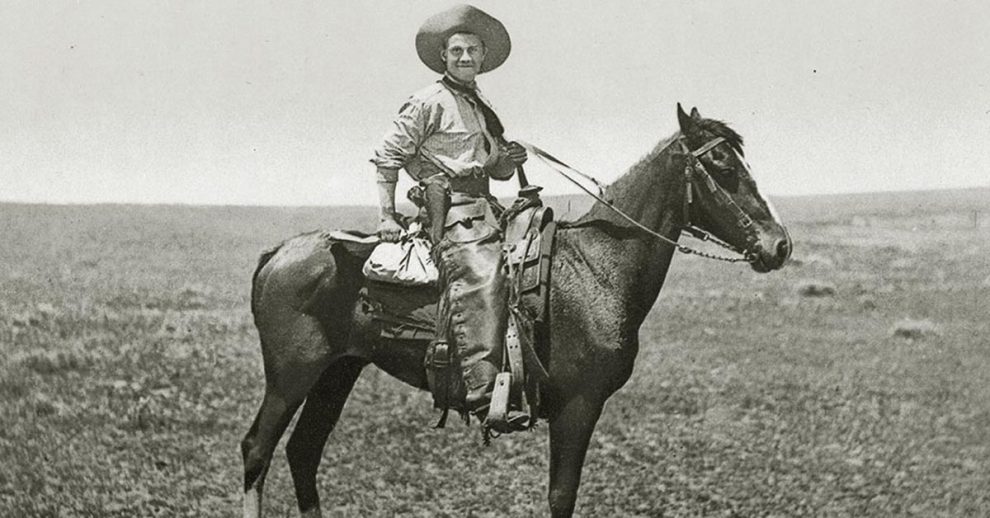The Wild West was rough, diverse, and full of surprises. From cowboy myths to strange truths, here are 20 Untamed facts from America’s untamed frontier.

1. In the Wild West, cowboys commonly loaded their six-shot revolvers with only five rounds, known as the “Cowboy Load.” This practice arose because a live bullet in the chamber beneath the hammer of a 19th-century single-action revolver could discharge with a sharp impact. Consequently, to prevent accidental firing, cowboys left one chamber empty.
2. Bass Reeves, the first Black Deputy U.S. Marshal in the Wild West, arrested over 3,000 felons during his illustrious career, including his own son. Despite frequently having his belt and hat shot off, he remarkably never sustained any injuries. Reeves’ dedication and skill made him one of the most respected lawmen of his time.
3. In the Wild West, people consumed a potent cocktail known as “Tarantula Juice,” concocted from wood alcohol, rosin, tobacco oil, sulfuric acid, hydrogen cyanide, and strychnine. This dangerous drink produced effects similar to methamphetamine, causing muscle spasms that felt like tarantulas crawling on the skin. Despite its lethal ingredients, it gained popularity among the daring and desperate.
4. The expression “riding shotgun” originated in the Wild West, describing the person sitting next to the stagecoach driver to guard against bandits. This role was crucial for the protection of passengers and valuable cargo during long and perilous journeys.
5. In the Wild West, cowboys and outlaws alike favored the bowler hat as their headgear of choice. The iconic ten-gallon hat only gained popularity in the 1920s, thanks to Hollywood’s influence. The bowler hat’s sturdy design and practicality made it a staple of frontier fashion during the 19th century.
6. Black Bart, known as the “gentleman robber,” famously held up stagecoaches in the Wild West, leaving behind poems as his signature. One of his verses read, “I’ve labored long and hard for bread, For honor, and for riches, But on my corns too long you’ve tread, You fine-haired sons of bitches.” His unique style and courteous demeanor made him a legendary figure in outlaw folklore.
7. The infamous Wild West outlaw William Bonney, better known as “Billy the Kid,” might have lived until 1950 under the alias Oliver “Brushy Bill” Roberts. On the night Sheriff Pat Garrett supposedly shot and killed The Kid, one of Garrett’s deputies reportedly exclaimed, “You shot the wrong man!” This claim has fueled speculation and intrigue about Billy the Kid’s true fate.
8. Wild West robber Black Bart became famous for his polite and chivalrous demeanor during his heists. In one notable instance, while robbing a Wells Fargo stagecoach, he refused to take a woman’s purse, opting to only seize the company’s money. His courteous behavior set him apart from other outlaws of his time.
9. Legendary Wild West gambler and gunman Doc Holliday believed he would die in a shootout with his boots on. Instead, he succumbed to tuberculosis in a hospital, where he requested a shot of whiskey from a nurse, which she denied. As he lay bootless, he humorously remarked, “This is funny,” before passing away.

10. Wild West lawman Porter Rockwell faced accusations of attempting to assassinate Missouri Governor Lilburn Boggs. However, the jury acquitted him, swayed by his reputation as a deadly gunslinger and his bold declaration, “I never shot at anybody, if I shoot they get shot!” Rockwell’s fearsome reputation and staunch defense contributed to his acquittal.
11. Outlaw Big Nose George (George Parrott), a notorious figure in the Wild West, met a grim fate after his lynching in the late 19th century. Authorities made his skin into a pair of shoes, which Wyoming’s first Democratic governor, John E. Osborne, wore to his inaugural ball in 1893. Additionally, part of George’s skull served as an ashtray, illustrating the macabre fascination with outlaws of that era.
12. Contrary to popular belief, bank robberies were rare in the Wild West. Between 1859 and 1900, only about eight bank heists were recorded. This rarity was due in part to the small number of banks and the tight-knit communities that made robberies difficult to execute.
13. The U.S. military introduced camels to the Wild West in 1855 because of their adaptability to harsh climates. This led to the formation of the U.S. Camel Corps, and by 1857, the military had imported 75 camels for use in the American Southwest. The project eventually failed due to the Civil War and logistical issues.
14. The invention of barbed wire in the late 19th century significantly changed the landscape of the Wild West. This affordable and efficient fencing method allowed ranchers to contain cattle easily, reducing the need for cowboys to manage large herds. Consequently, the open range era ended.
15. Gunfights in the Wild West were far messier and bloodier than depicted in Hollywood films. Unlike the choreographed duels seen in movies, real-life shootouts were often chaotic and lacked honor. Participants frequently used ambush tactics, and innocent bystanders sometimes became unintended victims.
16. In 1880, Buckskin Frank Leslie, a legendary gunfighter, gained fame in Tombstone, Arizona, after killing two men in self-defense. Surprisingly, just eight days later, he married the widow of one of his victims.
17. Tumbleweeds, often associated with the Wild West, are not native to North America. These iconic plants are actually invasive Russian thistles, introduced by immigrants in the 1870s. Despite their foreign origins, tumbleweeds have become emblematic of the American West’s rugged landscape.
18. The Bloody Benders were a notorious family of serial killers in the 19th-century Wild West, who lured travelers to their Kansas inn only to murder them. Despite their heinous crimes, the Benders were never caught, and their fate remains a mystery.
19. In the American West during the 1800s, up to one in four cowboys in Texas was African American, and an even larger number were of Mexican origin.
20. Cowboy boots are purposefully designed for rider safety. The high heel prevents the foot from slipping through the stirrup and getting caught. If a rider falls, the absence of laces allows the foot to slide out of the boot easily, reducing the risk of being dragged by the horse.
Sources: 1, 2, 3, 4, 5, 6, 7, 8, 9, 10, 11, 12, 13, 14, 15, 16, 17, 18, 19, 20










Add Comment